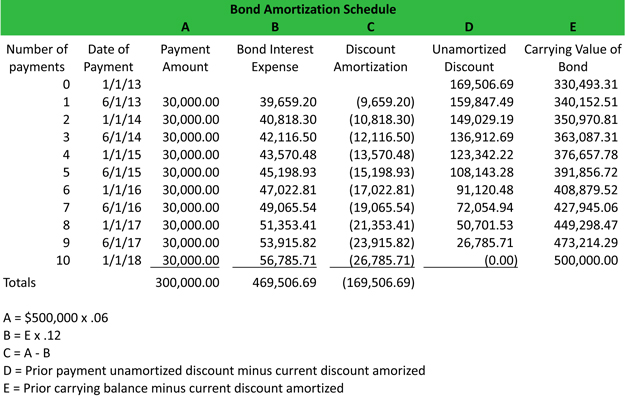Definition: The carrying value of a bond is the par value or face value of that bond plus any unamortized premiums or less any unamortized discounts. The net amount between the par value and the premium or discount is called the carrying value because it is reported on the balance sheet. You could think of this net amount being carrying to the balance sheet. Carrying value is often called the carrying amount or book value of the bond.
What Does Bond Carrying Value Mean?
Since interest rates fluctuate daily, bonds are rarely issued at their face value. Instead, most bonds are issued at a premium or discount depending on the difference between the market rate of interest and the stated bond interest on the date of issuance. These premiums and discounts are amortized over the life of the bond, so that when the bond matures its book value will equal its face value.
Example
As you can see from this bond amortization schedule, column D and column E always add up the the bond par value or face value of $500,000.

Download this accounting example in excel to help calculate your own Bond Discount problems.
When bonds are issued a premium or discount account is created. This account equals the difference between the face value of the bond and the actual cash collected from the bond sale. On the financial statements, the bond premium or discount account is netted with the bonds payable to arrive at the carrying value of the bond.
The carrying value or book value of a bond is the actual amount of money that the bond issuer owes the bondholder at any one point in time. That is the bond par value less any remaining discounts or plus any remaining premiums.


